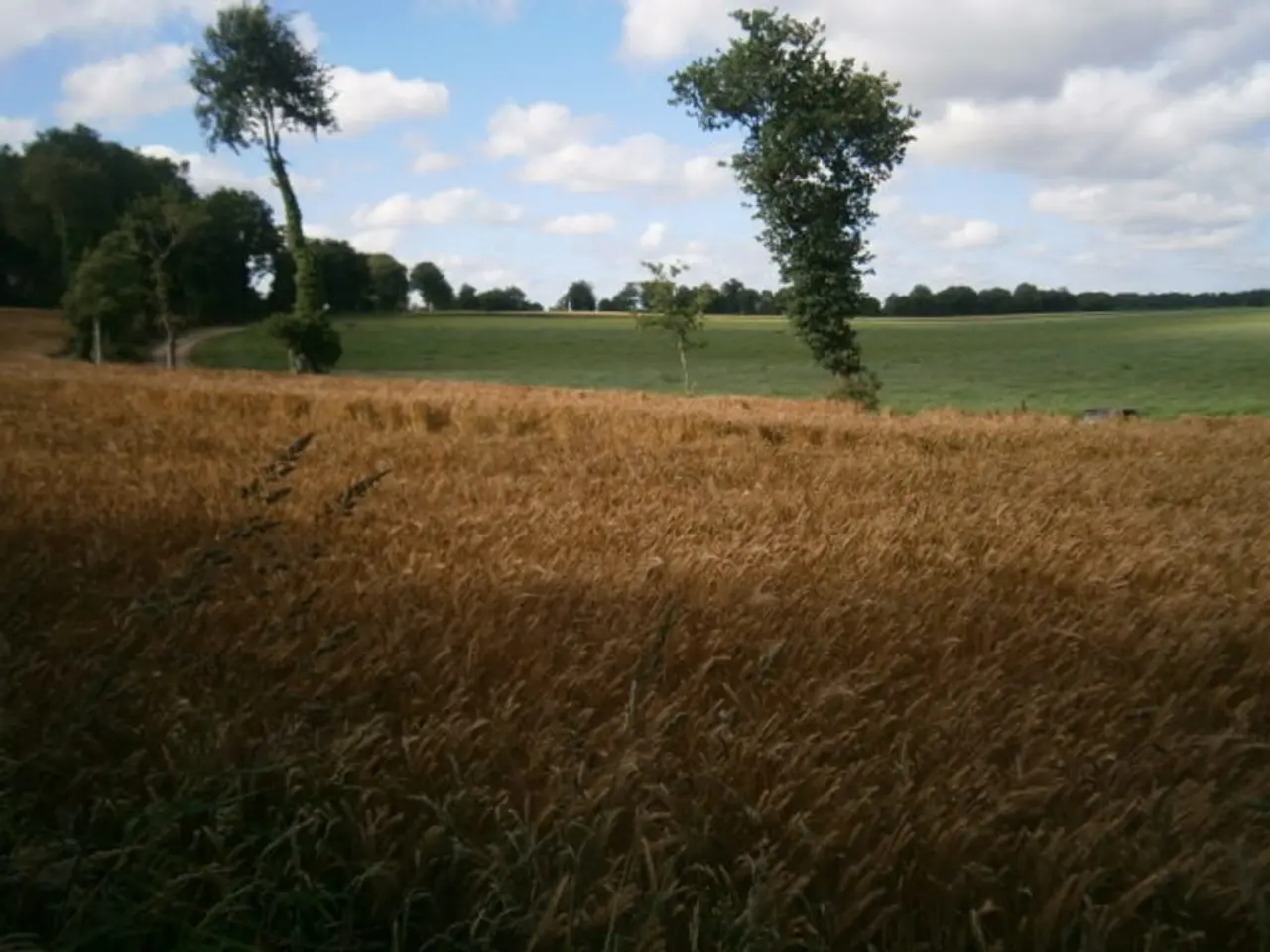Agriculture Accelerates Early Planting of Summer Crops Amidst Strengthening Monsoon
India's non-irrigated farmlands heavily rely on the monsoon's dependability, and this year, the forecasted above-normal monsoon is set to have positive economic and agricultural implications.
The increased summer (Kharif) crop sowing, observed by mid-July 2025, is a promising sign for the agricultural sector. The paddy area has expanded by 11% to 123.68 lakh hectares, total Kharif acreage has risen to about 598 lakh hectares (up from 561 lakh last year), and there has been a higher sowing of pulses and coarse cereals [1]. This expansion signals potential for greater crop production.
The benefits of a good monsoon are evident in the economic gains for farmers. For rice farmers, the reduced water and labor costs associated with good rainfall can boost profits by around 40,000-50,000 rupees (~US$467-583) [3]. This will support rural incomes and stimulate rural economies dependent on agriculture.
Moreover, the increased sowing of staples like rice, pulses, and coarse cereals supports national food availability, which is vital for India's large population. Improved food security is a significant advantage in the face of global food supply challenges.
However, regional disparities due to erratic rainfall remain a challenge. Some regions like Rajasthan have lagged behind targets due to delayed monsoon rains, impacting the sowing of oilseeds and pulses seriously [2]. Such variability risks lower outputs in vulnerable areas and may negatively affect rural livelihoods.
Forecasts indicate "normal to below normal" daytime temperatures and "normal to above normal" night temperatures, alongside generally active but not devastating rainfall patterns in July 2025 [4]. These moderate conditions support crop growth and reduce the risk of extreme weather losses.
The performance of the current agricultural season could significantly impact rural incomes and food security in India. A good harvest could improve the country's trade balance by lowering its dependency on imported edible oils. However, the drop in cotton and soybean plantings raises concerns about potential commodity supply shortages.
The farm ministry in India is closely monitoring the sowing process, and the upcoming weeks are crucial in assessing the full impact of the agricultural season in India. Sarah Tancredi, a journalist and news reporter specializing in environmental and climate crisis issues, strives to inform the public and promote sustainable solutions. Tancredi has a deep passion for the planet and is committed to raising awareness about pressing environmental challenges.
- The increased sowing of crops like rice, pulses, and coarse cereals, driven by a promising monsoon, could lead to a surge in environmental-science reports about agricultural productivity.
- As temperatures remain moderate and rainfall patterns active throughout July 2025, the positive agricultural implications might signal a green recovery for India's economy, contributing to positive environmental, social, and governance (ESG) events.
- Given the increased crop yield potential and improved food security, scientists in the field of environmental-science might find intriguing subjects to study, furthering our understanding of monsoon impacts on India's agriculture.
- Sarah Tancredi, with her passion for the planet and commitment to raising awareness about environmental challenges, will likely cover the agricultural events in her climate crisis reports, emphasizing the importance of sustainable farming practices and green solutions.







